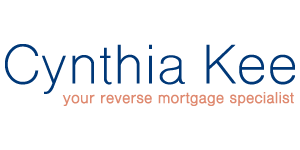Reverse Mortgage Misconceptions Debunked
“In the end, it’s not the years in your life that count. It’s the life in your years.” – Abraham Lincoln
There’s a lot of bad information out there about reverse mortgages. Here are the most common myths:
You won’t own your home anymore. False. You are still the owner, and the title stays in your name. A reverse mortgage just gives you access to your home’s unused equity.
The lender will get your home instead of your heirs. False. As the owner, you can leave your home to whomever you want. If your heirs want to keep the home, they’ll need to pay off the loan balance or refinance it. If they don’t want to take possession of your home, either your heirs or the lender can sell it to pay back the loan. If there is any remaining balance over and above what is owed, it goes to your heirs.
HECMs have prepayment penalties. False. There is no prepayment penalty on a HECM.
A reverse mortgage prevents you from selling your home. False. If at any time you need to sell your house, you can. The proceeds from the sale would go to pay off the remaining balance of your loan. Whatever’s left over is yours to keep.
Cost of a Reverse Mortgage
The cost of your reverse mortgage will depend on the type of loan you choose and the lender. There are, of course, some upfront costs.
Here are some of the costs you can expect with a HECM:
Reverse mortgage counseling. The average cost for HUD-approved counseling is around $125, which can usually be rolled into your loan costs.
Origination fees. This fee is paid to the lender and can’t exceed $6,000.
Loan Fees. These costs often include an appraisal, a title search, surveys, inspections, recording fees, mortgage taxes, credit checks, and other fees paid to third parties.
An initial mortgage insurance premium. For HECMs, an initial two percent mortgage insurance premium (MIP) is charged by your lender and paid to FHA.
How to Apply for a Reverse Mortgage
Applying for a reverse mortgage is a straightforward process. The steps are similar to applying for a regular mortgage.
Choose a lender. The National Reverse Mortgage Lenders Association is a good resource to find a reputable lender. Be sure to compare the rates that are being offered.
Ask questions. Once you find a lender, ask as many questions as you can. You want to know your options, how long the loan will take to close, whether a fixed rate or variable rate is better for you, etc.
Choose your disbursement type. If you choose a fixed-rate mortgage, you’ll receive your money in a single lump-sum payment. If you go with a variable-rate mortgage, you can get the money you’re borrowing as a lump sum, line of credit, in monthly payments, or a combination.
Get counseling. Before you can apply, you’ll need to attend a counseling session from a HUD-approved counseling agency. HUD has a list of approved counselors available in your state.
Fill out the application. Once you’ve gone through your consultation, you can apply with your chosen lender. As with any traditional mortgage, you fill out an application and provide various documentation requested by your lender.
Wait for appraisal. Once you apply, your application will be evaluated and your home appraised.
Receive funds. If all goes well, you’ll close on your loan and receive your funds.




